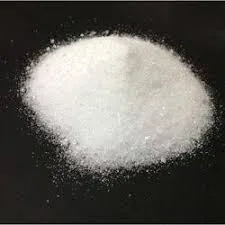Exploring Cellulosic HPMC Properties, Applications, and Future Prospects
Hydroxypropyl methylcellulose (HPMC) is a cellulose derivative that has gained prominence in various industries due to its unique properties and versatility. As a non-ionic, water-soluble polymer, HPMC is derived from natural cellulose through a series of chemical modifications that introduce hydroxypropyl and methoxy groups. This article delves into the characteristics of HPMC, its applications across different fields, and the future opportunities it presents.
Properties of HPMC
One of the most defining characteristics of HPMC is its ability to form clear, viscous solutions in water, making it an excellent thickening agent. The degree of substitution of the hydroxypropyl and methoxy groups can be controlled during the synthesis process, allowing for a range of HPMC products with varying solubility and viscosity profiles. This flexibility makes HPMC suitable for numerous applications, as manufacturers can tailor the product to meet specific needs.
Additionally, HPMC is renowned for its gel-forming capabilities, which are vital in many formulations. It exhibits stability across a broad pH range, making it compatible with a variety of other ingredients. Importantly, HPMC is resistant to microbial degradation, which enhances its shelf life and safety in formulations.
Applications of HPMC
1. Pharmaceutical Industry HPMC is widely used in the pharmaceutical sector, primarily as an excipient in drug formulations. It serves as a binder in tablets, ensuring that the active ingredients are held together effectively. Its film-forming properties enable the creation of sustained-release formulations, where the drug is released over an extended period, improving patient adherence and therapeutic outcomes. Furthermore, HPMC is used in the production of ophthalmic preparations, such as eye drops, where it acts as a lubricant and viscosity enhancer.
cellulos hpmc

2. Food Industry In the food realm, HPMC functions as a thickening agent, stabilizer, and emulsifier in various products ranging from sauces and dressings to ice creams and baked goods. Its ability to improve texture and mouthfeel is particularly valued in the development of low-fat and gluten-free products, where it helps mimic the properties of fat and gluten.
3. Construction Industry HPMC is increasingly being incorporated into construction materials, particularly in mortars, plasters, and tile adhesives. Its water-retention properties allow for extended workability and improved adhesion. The use of HPMC in construction not only enhances the performance of materials but also contributes to sustainability by reducing waste and improving the longevity of building structures.
4. Personal Care Products In the realm of cosmetics and personal care, HPMC is used as a thickener and stabilizer in lotions, creams, and gels. Its ability to provide a smooth texture enhances the applicability of these products. Moreover, HPMC’s water-retaining properties help improve skin hydration, making it a popular ingredient in skincare formulations.
Future Prospects
As industries continue to evolve, the demand for sustainable and multifunctional materials is on the rise. HPMC, being derived from renewable resources, aligns well with these sustainability goals. Moreover, ongoing research is aimed at expanding its utility in nanotechnology, drug delivery systems, and biodegradable packaging materials.
The advent of biopolymers has also sparked interest in HPMC as a suitable alternative to synthetic polymers that often pose environmental concerns. The focus on green chemistry and the development of environmentally friendly production processes are likely to enhance the attractiveness of HPMC for manufacturers and consumers alike.
In conclusion, hydroxypropyl methylcellulose represents a remarkable example of how a natural polymer can be transformed into a versatile and functional material across a wide range of applications. Its unique properties make it an indispensable ingredient in pharmaceuticals, food, construction, and personal care products. As the push for sustainability and innovation continues, HPMC is well poised to play a significant role in future developments across these industries, paving the way for new applications and improved formulations. With its comprehensive benefits and adaptability, HPMC is likely to remain a key player in the realm of functional materials, balancing performance with environmental consciousness.
-
Rdp Powder: Key Considerations for Wholesalers in the Building Materials IndustryNewsJul.08,2025
-
Key Considerations for Wholesalers: Navigating the World of Hpmc - Based ProductsNewsJul.08,2025
-
Hpmc Detergent: Key Considerations for WholesalersNewsJul.08,2025
-
Key Considerations for Wholesalers: China Hpmc For Tile Adhesive, Coating Additives, Concrete Additives, and MoreNewsJul.08,2025
-
Crucial Considerations for Wholesalers: Navigating the World of Construction MaterialsNewsJul.08,2025
-
Key Considerations for Wholesalers Sourcing Additive For Cement, Additive For Concrete, Additive For Putty from Additive Manufacturer Shijiazhuang Gaocheng District Yongfeng Cellulose Co., Ltd.NewsJul.08,2025




